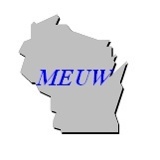Information
-
Audit Title
-
Entity
-
Department
- Cemetary
- City Hall
- DPW
- Finance
- Fire Dept
- Police Dept
- Library
- Parks
- Recreation Dept
- Water Dept
- Wastewater Plant
- Electric
- Sewer
- Water Treatment Plant
-
Conducted on
-
Prepared by
-
Location
-
Personnel
-
Document No.
-
An inspection was conducted at the above referenced location to ensure compliance with all applicable workplace and facility safety regulations. The following items listed below are recommendations for corrective action to achieve regulatory compliance or represent industry standards and/or best practices in loss prevention, safety, health, and security. WITHIN 30 DAYS OF RECEIPT OF THIS FORM please address the issues listed below. A written response confirming corrective action has been taken OR please specify a corrective plan of action with expected dates or timelines for completion.
Section 1 - General Safety
-
Are all electrical panels kept closed, with no indications of tripped breakers or open cutouts?
-
Are changes in walking elevations clearly marked?
-
Are low hanging objects in walkways clearly marked?
-
Have all unsafe conditions been otherwise noted? If not, check "No" and detail additional safety issues.
Section 2- Office Safety
-
Are all electrical cords in good repair, and properly used (i.e. no daisy chaining, permanent use, overloading, etc)?
-
Are all kitchen appliances used for food preparation located in a hygienic area
-
Are all kitchen appliances plugged directly into a wall outlet (without the use of extension cords, power strips, adapters, etc)?
-
Have all unsafe conditions been otherwise noted? If not, check "No" and detail additional safety issues.
Section 3 - Emergency Action Plans
-
Is an evacuation plan clearly posted?
-
Is a NOAA Weather Radio or other alerting device being used to monitor severe weather?
-
Is the Tornado Shelter clearly marked?
-
Do customer service staff have a "Bomb Threat Checklist" readily available?
-
Are emergency exits clearly marked?
-
Are emergency exit doors unlocked and/or equipped with a push bar to open from the interior?
-
Have all unsafe conditions been otherwise noted? If not, check "No" and detail additional safety issues.
Section 4 - Fire Prevention
-
Have all fire extinguishers been inspected monthly (and documented)?
-
Are all fire extinguishers properly mounted, unobstructed, with a current annual inspection tag, tamper tag, and working pressure gauge?
-
Are the appropriate class fire extinguishers located every 50-75' based on hazards?
-
Are fire doors closed at all times or equipped with a fusible link actuated closing device?
-
If equipped with a sprinkler system, are all materials stored below the horizontal plane of the sprinkler head and no closer than 18" minimum?
-
If equipped, is the fire alarm tested and inspected annually?
-
If equipped, is the Supervisory Fire Panel free of trouble codes?
-
If equipped, is the fire sprinkler system tested and inspected at least annually?
-
Are rags used with solvent based chemicals properly stored and disposed of after use?
-
Are all fuel cans UL-Listed Safety Cans?
-
Are Boiler/Furnace rooms clear of all combustibles?
-
Are all flammable storage cabinets properly grounded?
-
Have all unsafe conditions been otherwise noted? If not, check "No" and detail additional safety issues.
Section 5 - Egronomics
-
Do workstations appear to be properly arranged for employees?
-
Are materials stacked on shelving with heaviest items at waist level to reduce reaching/bending strains?
-
Have all unsafe conditions been otherwise noted? If not, check "No" and detail additional safety issues.
Section 6 - Housekeeping
-
Are aisles and areas around doorways kept free of storage or other trip hazards?
-
Are all stairways and hallways free of storage?
-
Is the area under stairways free of combustible storage (unless sprinkler extensions are present under the staircase)?
-
Are all boxes, equipment, and materials stored to prevent items from falling?
-
Are rafters, overhead piping, and shelving free from sawdust and/or other combustible accumulations?
-
Are woodworking areas free of sawdust accumulation?
-
Are all electrical panels easily accessible, with a minimum of 36" of clear space in front of the panel, and free of combustible storage?
-
Are all electrical panels, junction boxes, wiring, and switches properly terminated and/or covered?
-
Are rafters clear of storage (unless properly load rated for use as storage)?
-
Are break rooms, kitchens, and other employee food prep areas clean and hygienic?
-
Have all unsafe conditions been otherwise noted? If not, check "No" and detail additional safety issues.
Section 7 - Hazard Communication
-
Is the MSDS book readily available?
-
Are an adequate number of flammable storage cabinets available, and are all combustible/flammable materials properly stored at the end of the shift?
-
Are pressurized tanks of flammable/combustible gases and liquids stored at floor level and properly secured?
-
Are all secondary containers properly labeled?
-
Are hazardous chemicals properly segregated?
-
Are all flammable storage areas properly equipped with Class 1 (Div 1 or 2) electrical appliances and wiring?
-
Are hazardous and/or flammable storage rooms properly ventilated?
-
Have all unsafe conditions been otherwise noted? If not, check "No" and detail additional safety issues.
Section 8 - First Aid
-
Is a First Aid kit readily available?
-
Is the First Aid kit stocked with the appropriate types of medical supplies needed for potential injuries that may be encountered in the workplace?
-
Are eyewash stations or bottles located within 25' of where chemicals are openly handled or mixed?
-
Are eyewash and deluge showers tested weekly (and documented)?
-
Have all unsafe conditions been otherwise noted? If not, check "No" and detail additional safety issues.
Section 9 - Exposure Control (Bloodbourne Pathogens)
-
Is a Bloodbourne Pathogen cleanup kit readily available?
-
Have all unsafe conditions been otherwise noted? If not, check "No" and detail additional safety issues.
Section 10 - Personal Protective Equipment
-
Is all PPE properly stored when not in use?
-
Is the appropriate types of PPE available for the job hazards encountered by employees?
-
Is the appropriate PPE being utilized by employees during tasks?
-
Have all unsafe conditions been otherwise noted? If not, check "No" and detail additional safety issues.
Section 11 - Hearing Conservation
-
Is the appropriate hearing protection being utilized by employees during tasks?
-
Are the appropriate types of hearing protective devices available for the noise levels encountered by employees?
-
Is appropriate warnings signage present to warn employees of high noise areas? (generator, compressor, machinery rooms etc.)
-
Have all unsafe conditions been otherwise noted? If not, check "No" and detail additional safety issues.
Section 12 - Respiratory Protection
-
Have all unsafe conditions been otherwise noted? If not, check "No" and detail additional safety issues.
Section 13 - Tools and Equipment
-
Are all power cords in good condition?
-
Are all electrical extension cords properly used and in serviceable condition? (Not in permanent use, overloaded, damaged, etc)
-
Are all saws, blades, and other cutting devices properly sheathed or otherwise stored with the cutting edge guarded?
-
Are all machines and equipment properly guarded?
-
Are tools/equipment properly plugged in (not plugged into an improperly rated extension cord or power strip, overloaded outlet, etc)
-
Are all safety features on power equipment and tools functioning properly?
-
All Emergency Stop buttons accessible and tested routinely?
-
Bench Grinders: is the gap between the stone wheel and the tool rest no greater than 1/8" and the gap between the stone wheel and the adjustable tongue no greater than 1/4"?
-
Are dust collection systems and duct properly grounded against static buildup?
-
Are open tub, solvent-based parts washers equipped with a fusible link actuated self closing lid?
-
Have all unsafe conditions been otherwise noted? If not, check "No" and detail additional safety issues.
Section 14 - Vehicle Operation, Repair, and Maintenance
-
Are fire extinguishers present (and in serviceable condition) on all vehicles and mobile equipment?
-
Is preventative maintenance and breakdown service records maintained for all vehicles?
-
Are DOT inspections conducted on vehicles meeting the definition of a Commercial Motor Vehicle?
-
Are daily pre-trip inspections conducted by the operator and appropriately documented?
-
For all vehicles used for maintenance in or near a roadway, are all vehicles and mobile equipment equipped with amber lighting that is visible 360 degrees?
-
Have all unsafe conditions been otherwise noted? If not, check "No" and detail additional safety issues.
Section 17 - Confined Space
-
Are all permit-required confined space entry points properly labeled and guarded?
-
Have all unsafe conditions been otherwise noted? If not, check "No" and detail additional safety issues.
Section 18 - Material Handling
-
Are conveyor systems properly guarded?
-
Are palletized loads properly stacked?
-
Are all materials properly stored to prevent materials from being knocked over or accidentally falling?
-
Have all unsafe conditions been otherwise noted? If not, check "No" and detail additional safety issues.
Section 19 - Powered Industrial Truck
-
Have all unsafe conditions been otherwise noted? If not, check "No" and detail additional safety issues.
Section 20 - Cranes and Hoists
-
Are all chain, belt, hydraulic, and wire components of hoist in good condition and free of defect?
-
Are cranes and hoists inspected and serviced at least annually?
-
Have all unsafe conditions been otherwise noted? If not, check "No" and detail additional safety issues.
Section 21 - Slings, Ropes, and Chains
-
Are all chains in good condition free from from damage, elongation, etc?
-
All all slings, ropes, and chains inspected routinely prior to use for defects?
-
Have all unsafe conditions been otherwise noted? If not, check "No" and detail additional safety issues.
Section 22 - Ladders and Scaffolding
-
Are all ladders free from damage?
-
Are ladders properly secured when in use?
-
Is the workplace free from "Homemade" portable ladders?
-
Have all unsafe conditions been otherwise noted? If not, check "No" and detail additional safety issues.
Section 23 - Fall Protection
-
Are all openings exposing a fall of 6' or greater properly guarded.
-
Have all unsafe conditions been otherwise noted? If not, check "No" and detail additional safety issues.
Section 24 - Hazardous Energy Control (LOTO)
-
Are all energy control points clearly marked?
-
Are an adequate number of personal locks available?
-
Are specialized lockout devices available to secure all energy control points?
-
Have all unsafe conditions been otherwise noted? If not, check "No" and detail additional safety issues.
Section 25 - Welding
-
Are Oxy-Acetylene torches equipped with a flashback arrestor?
-
Are all hoses, cables, and grounds in good condition free of damage or defect?
-
Is the pressure bleed off the lines when tanks are not in use?
-
Are regulator gauges in serviceable condition free of damage and/or defect?
-
Is adequate ventilation present while welding?
-
Are Oxygen and Acetylene gases properly segregated when in storage?
-
Do all designated welding areas have a minimum of a 35' clear space, free from combustibles?
-
Have all unsafe conditions been otherwise noted? If not, check "No" and detail additional safety issues.
Section 26 - Laboratory Safety
-
Are all refrigerators and freezers used for holding chemicals, evidence, assays, and samples clear of all food and beverages for human consumption?
-
Have all unsafe conditions been otherwise noted? If not, check "No" and detail additional safety issues.







